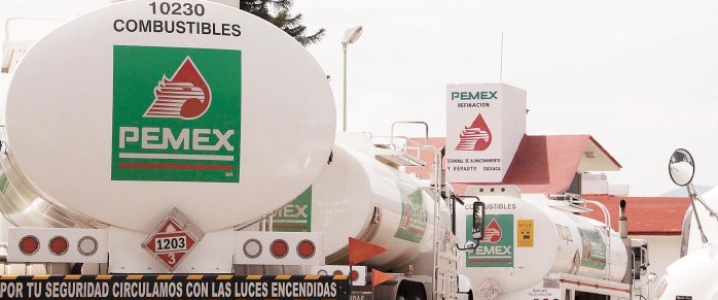
Last week a hefty package of $3.5 billion worth of tax cuts were granted to the struggling state oil company Petroleos Mexicanos (Pemex) to be spread over the next six years. Now, on Tuesday morning, Mexico’s new leftist president Andres Manuel Lopez Obrador had to pledge even more aid to the cash-strapped company. The exact amount has not yet been specified, but it probably will be significant if Pemex’s ever-worsening needs are to be met.
Pemex is not entirely to blame, however, for its growing predicament. For years the Mexican government has used Pemex’s pockets as a personal piggy bank, without ever fully repaying what was taken out of the coffers. Now, as Lopez Obrador pumps more money into Pemex, the company’s bonds have subsequently seen major gains as its credit rating was slashed to a dismal figure.
The money given by the recent tax cuts doesn’t compare, however to the vast amounts of cash that the government has been skimming off of Pemex for years. The state-owned oil company has all but buckled under the financial burden of supporting its own operational costs as well as a huge portion of public spending, and therefore hasn’t enjoyed a positive free cash flow in over a decade–since 2007. Through all the highs and lows of oil prices over the last decade, Pemex has been steadily bleeding cash regardless of whether its product was at $100 a barrel or $30.
The hydra of Mexico’s cash flow woes has many heads. The issue has been created and compounded by sweeping corruption, skyrocketing debt, and plummeting rates of production–not to mention fuel theft, piracy, and pipeline explosions. Let’s start with the debt. Pemex is the most indebted oil company in the world. At its worst, Pemex’s net debt skyrocketed from where it was in 2007 at a respectable .5 times Ebitda (on earnings before interest, taxes, depreciation, and amortization) to a whopping 7 times Ebitda ten years later, by the end of 2017. Now they’ve managed to reign those figures in a bit to 5 times Ebitda–a dismal figure at best.
Dovetailing with the nation’s ballooning debt, oil production has also slowed to just a trickle of its former levels in Mexico. Ten years ago, Pemex consistently produced more than 4 million barrels of oil equivalent per day. Now, that number has nearly been cut in half, to around 3.5 million barrels per day from September 2017 through September 2018. Pemex went from producing volumes comparable with supermajors like Exxon Mobil Corp. to falling off the map as an oil major.
All this is to say that Pemex is no longer attractive to investors. That being said, national oil companies don’t exist to serve investors alone. The interests of the Mexican government also come heavily into play. And therein lies the problem. The government’s burden on its oil company has grown steadily heavier until the company is no longer able to operate as just that–a company.
While Lopez Obrador throws money at Pemex to try to dig the company out of its hole, he’s also contributing to the long legacy of short-term thinking that got Pemex into this position in the first place. The new president’s lofty goals for reviving the Mexican oil and gas industry go against balancing the company’s books.
What’s more, while Lopez Obrador aggressively invests in Pemex, he’s pulling away from other important energy reforms that would bring in new money and share development costs, as well as auctions that would allow private interests to explore for oil in Mexico.
Mexico has an opportunity to cash in on ramped up oil demand brought on by U.S. sanctions on Venezuela among other market factors, but the company simply can’t produce enough oil to get into the game. Right now, Pemex is not even producing enough light oil to fill its own refineries, and its once massive proven reserves have been sucked dry. The nation’s current proven reserves are just a fourth of what they were 20 years ago.
Mexico is in trouble, and just throwing money at the problem is not going to stop Pemex from sinking. Instead of short-term solutions and tax cuts, the system needs a major overhaul. But with a decade of negative cash flow, it’s hard to see how Pemex will be able to find the resources to make it happen.
